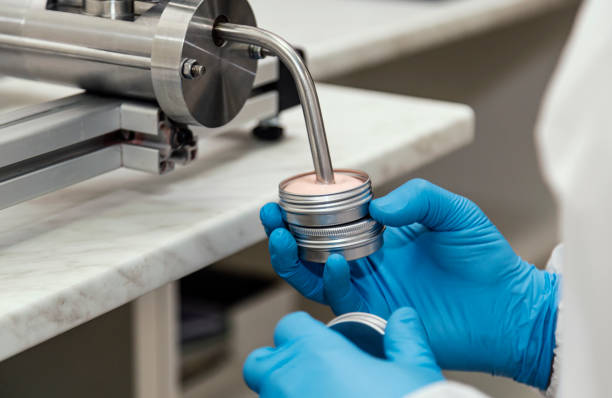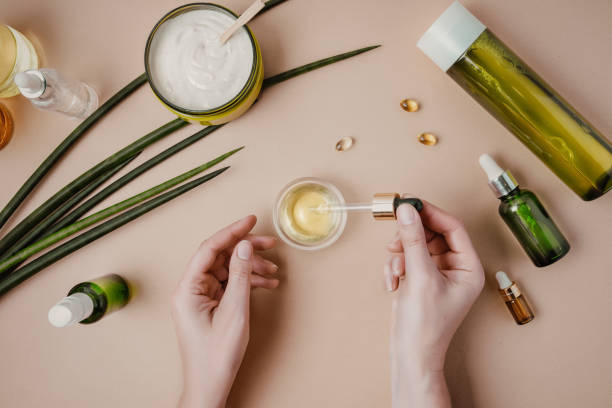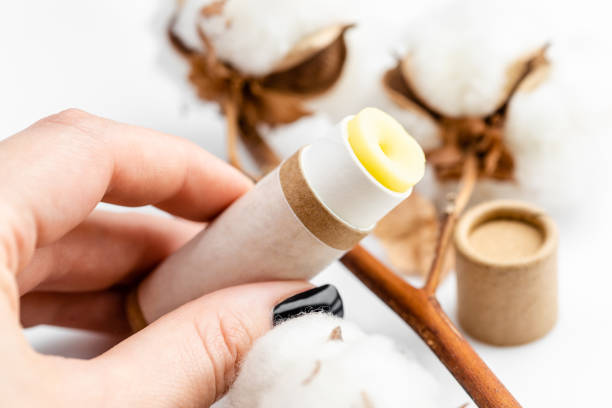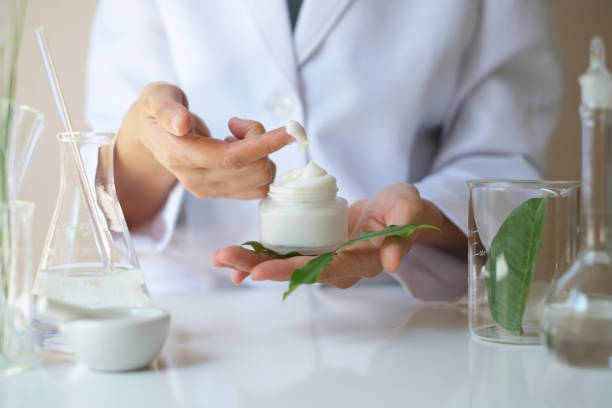Sensory Analysis Guide in the Cosmetics and Beauty Products Industry

Introduction
The cosmetics and beauty products industry is a fascinating universe where sensory perception plays a crucial role. How do consumers perceive the texture of a cream, the scent of a shampoo, or the color of a lipstick? How do these sensations influence their purchasing decisions and satisfaction? This is what we will delve into in-depth in this sensory analysis guide dedicated to the cosmetics industry.
In the following chapters, we will immerse ourselves in the world of the senses, starting with an introduction to sensory analysis and the foundations of sensory perception. We will then detail essential methodologies for conducting sensory analysis in the context of beauty products.
Subsequent chapters will focus on each sense individually, from sight to smell, touch to taste, and even hearing. You will discover how each sense interacts with cosmetic products and how manufacturers can leverage these interactions to create more appealing products.
We will also address more advanced topics, such as the influence of colors on product perception, emotion and sensoriality, as well as comparative sensory analysis and the use of consumer panels.
Finally, we will examine how sensory analysis can be a valuable tool in the process of creating cosmetic products, from formulation to marketing.
This guide is designed for industry professionals, researchers, students, and anyone interested in the science of sensory perception. It offers a comprehensive perspective on this ever-evolving field and aims to inspire new ideas and innovations in beauty product creation.
So, dive with us into the sensory world of cosmetics and discover how science can illuminate beauty!
Chapter 1: Introduction to Sensory Analysis
The Senses and Perception
Sensory analysis, as we know it today, is based on a profound understanding of the five human senses: sight, hearing, touch, smell, and taste. These senses interact in a complex way to form our sensory perception, which plays a crucial role in how we experience and evaluate cosmetic and beauty products.
Why Sensory Analysis is Crucial
Understanding how consumers perceive beauty products is essential for the industry. By using rigorous sensory analysis methods, manufacturers can create products that appeal not only visually but also offer a enriching sensory experience. This approach can strengthen customer loyalty and boost sales.
In the following chapters, we will delve deeper into sensory analysis methodologies, providing practical tools to assess and enhance the sensory aspects of cosmetic products. We will also explore the many ways the five senses interact to create unique sensory experiences. Welcome to the exciting world of sensory analysis in the cosmetics and beauty products industry.
Chapter 2 : Foundations of Sensory Perception
The Process of Sensory Perception
Sensory perception is a complex process that begins when our sensory organs detect external stimuli, such as light, sounds, smells, textures, or flavors. These stimuli are then transformed into electrical signals that are transmitted to the brain. The brain interprets these signals to give rise to our sensory experience.
Sensory Selection
One of the initial stages of sensory perception is sensory selection, involving the focus of attention on specific stimuli among the multitude surrounding us. In the cosmetics industry, this means that consumers may pay more attention to the color of a lipstick or the scent of a lotion based on their personal preferences.
Perceptive Perception
Sensory perception is not a simple transmission of information but an interpretation. Our brain considers our past experiences, emotions, expectations, and knowledge to make sense of sensory stimuli. This is why two people can perceive the same cosmetic product differently.
Influence of Emotions on Sensory Perception
Emotions play a major role in how we perceive cosmetic products. A soothing fragrance can make us feel relaxed, while a vibrant color can evoke joy. Emotions can influence our purchasing decisions and satisfaction with a product.
Colors and Emotions
Colors have well-established emotional associations. For instance, blue is often linked to tranquility and confidence, while red conveys passion and excitement. In the cosmetics industry, the choice of colors for packaging and products themselves can significantly impact how consumers perceive these products.
Fragrances and Emotions
Fragrances are particularly powerful in triggering emotions. A floral fragrance can evoke freshness and femininity, while a woody fragrance may recall warmth and nature. Perfumers use these associations to create unique sensory experiences in beauty products.
Objective vs. Subjective Evaluation
In sensory analysis of cosmetic products, it is essential to distinguish between objective and subjective evaluations. Objective evaluations rely on tangible measures, such as temperature or brightness. Subjective evaluations, on the other hand, are based on individual opinions and perceptions.
Methods of Sensory Evaluation
In the upcoming chapters, we will explore various sensory evaluation methods, from taste tests to olfactory assessments to consumer satisfaction surveys. Each method has its advantages and limitations, but all are crucial for understanding the perception of cosmetic products.
Ultimately, sensory perception is at the heart of the cosmetics and beauty products industry. By understanding how consumers visually, olfactorily, tactically, and gustatorily perceive these products, manufacturers can create unforgettable sensory experiences. This chapter lays the foundation for that understanding, which we will delve deeper into in the following chapters.
Chapter 3 : Sensory Analysis Methodology
Methods of Sensory Evaluation
To conduct accurate and meaningful sensory analysis in the cosmetics and beauty products industry, it is essential to choose the right evaluation methods. Here is an overview of the main methods used:
Constitution of a Sensory Panel
A key element of any successful sensory analysis is the establishment of an appropriate sensory panel. The panel should consist of trained evaluators representative of the target population. In the cosmetic context, factors such as age, gender, and sensory preferences are important to consider.
Development of Evaluation Sheets
To ensure consistency in sensory analysis, it is common to use evaluation sheets. These sheets allow evaluators to systematically note and describe their sensory perceptions. Evaluation sheets may vary based on the method used and product characteristics.
Data Collection
Data collection during sensory tests is a crucial step. The collected data can be quantitative (numerical scores) or qualitative (descriptions). Statistical analysis software is often used to analyze quantitative data and determine if significant differences exist between products.
Interpretation of Results
Once the data is collected and analyzed, it is essential to interpret the results meaningfully. This may involve making decisions on product formulation, identifying strengths and weaknesses of a product, or understanding consumer preferences.
In the upcoming chapters, we will delve deeper into specific sensory analysis methods applicable to the cosmetics industry. We will explore how these methods can be used to enhance the creation, development, and marketing of sensorially captivating beauty products.
Chapter 4 : Visual Sensations in Cosmetic Products
The Power of Colors
Colors play a crucial role in the cosmetics industry. They can evoke emotions, create associations, and influence purchasing decisions. Understanding the impact of colors is essential for designing appealing products.
Importance of Visual Presentation
In addition to colors, the visual presentation of cosmetic products is essential. Consumers are drawn to aesthetically pleasing packaging and well-thought-out design.
Conclusion
Visual sensations in cosmetic products are a crucial element of the overall consumer experience. Understanding how colors, design, and visual presentation influence product perception is essential for creating beauty products that captivate the senses and emotions of consumers. In the following chapters, we will explore other aspects of sensory analysis in the cosmetics industry to deepen our understanding of the sensoriality of beauty products.
Chapter 5 : The Importance of Olfaction in the Cosmetics Industry
The Power of Fragrances
In the cosmetics and beauty products industry, fragrances play a crucial role. Smell is a powerful sense that can evoke emotions, recall memories, and influence consumer preferences.
Olfactory Emotion
Fragrances can evoke a range of emotions, from relaxation to excitement and confidence. For example, a gentle floral fragrance can evoke a sense of freshness and well-being, while a spicy fragrance can create an atmosphere of warmth and allure.
Olfactory Memories
Smell is closely linked to memory. A simple scent can evoke old memories and past experiences. Pleasantly scented cosmetic products can become triggers for positive memories for consumers.
Creating Cosmetic Fragrances
Creating fragrances for cosmetic products is a complex art. Perfumers use a variety of natural and synthetic ingredients to compose unique scents. The goal is to create a fragrance that not only pleases the senses but also harmonizes with the cosmetic product.
Notes of Top, Heart, and Base
Fragrances are often described in terms of top, heart, and base notes. Top notes are the first smells perceived, heart notes emerge after the product application, while base notes are the most enduring. This olfactory complexity adds depth to the sensory experience.
Olfactory Sensory Analysis
Olfactory sensory analysis involves subjective evaluations of fragrances. Consumers may be asked to assess the intensity, durability, and quality of a fragrance. Tests can also be conducted to determine consumer preferences for different fragrances.
Trends in Cosmetic Perfumes
Trends in the cosmetic perfume industry are constantly evolving. In recent years, there has been a growing interest in natural perfumes, sustainable fragrances, and collaborations with renowned perfumers to create unique olfactory experiences.
Conclusion
Smell is a powerful sense that should not be underestimated in the cosmetics and beauty products industry. Well-designed fragrances can create memorable sensory experiences for consumers and enhance brand loyalty. Understanding how smells influence product perception is essential for manufacturers aiming to create appealing cosmetic products. In the following chapters, we will explore other aspects of sensory analysis in this ever-evolving industry.
Chapter 6 : Touch and Textures in Beauty Products
The Importance of Touch
The sense of touch plays a crucial role in how consumers perceive beauty products. The sensation on the skin directly influences the user experience and customer satisfaction.
Varied Textures
Beauty products exhibit a wide variety of textures, from creamy to light, soft to granular. Each texture creates a unique sensory experience. For example, a thick cream may evoke a sense of luxury and nourishment, while a light lotion may give a refreshing impression.
Tactile Evaluation
Tactile sensory analysis involves evaluating the texture and feel of beauty products. Evaluators can use their hands to describe the consistency, smoothness, viscosity, and other tactile aspects of the products.
Consistency Tests
Consistency tests are commonly used to assess the stiffness or flexibility of products by measuring the force required to move an object through the substance. This can be applied to products such as creams, balms, and gels.
Slip Tests
Slip tests evaluate how easily a product glides on the skin. This feature is important for products like lotions and foundations that need to apply smoothly.
Influence of Texture on Perception
The texture of a product can have a significant impact on consumer perception. A pleasant texture can create a positive sensory experience, while an unpleasant texture can deter purchase.
Texture-Efficacy Association
Consumers often associate a specific texture with the effectiveness of a product. For instance, a thick cream may be perceived as more hydrating than a light lotion, even if the active ingredients are the same.
Adaptation to Skin
The texture of a product should also be suitable for the target skin type. For example, dry skin may prefer richer textures, while oily skin may prefer light and non-greasy textures.
Conclusion
Touch and textures play a central role in the beauty products industry. Designing products that offer pleasant sensations on the skin is crucial for customer satisfaction. In the upcoming chapters, we will explore other aspects of sensory analysis in the cosmetic industry to deepen our understanding of the sensoriality of beauty products.
Chapter 7 : Taste and Cosmetics
Taste is a less obvious sense in the cosmetics industry compared to the food industry, but it can still play a role in the perception of beauty products, especially those that come into direct contact with the mouth, such as lip balms and oral care products.
Taste and Product Safety

Development of Flavors

Flavored Lip Balms

Taste in Lip Balms and Mouth Products

Taste Evaluation in Sensory Tests

Conclusion
Although taste is not the primary sense engaged in the cosmetics industry, it still plays a role in consumer satisfaction, especially for oral care products and lip balms. Understanding how taste influences the perception of products is essential for manufacturers keen on providing comprehensive and enjoyable sensory experiences to their customers. In the upcoming chapters, we will explore other aspects of sensory analysis in the cosmetics industry to deepen our understanding of the sensoriality of beauty products.















